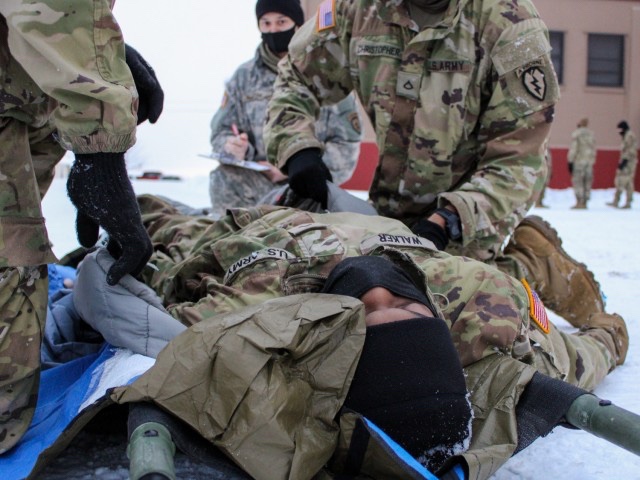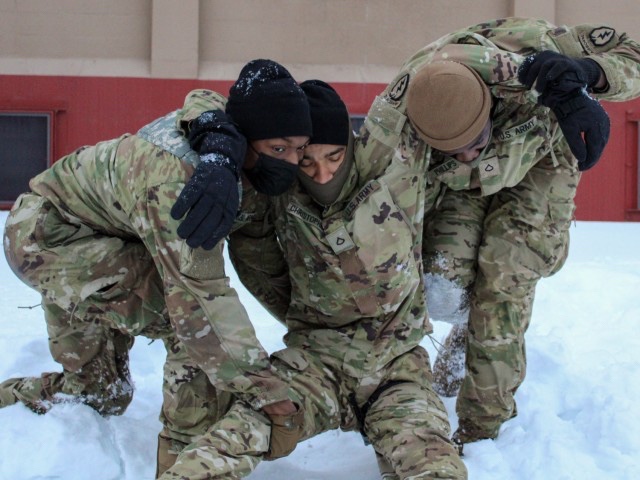JOINT BASE ELMENDORF-RICHARDSON, Alaska — Jan. 10-14, 2022, Paratroopers with the 4th Infantry Brigade Combat Team (Airborne), 25th Infantry Division, “Spartan Brigade,” completed the inaugural Arctic First Responder Course held at Joint Base Elmendorf-Richardson, Alaska.

The Arctic First Responder Course is a prototype Combat Lifesaver Course that adapts Tactical Combat Casualty Care for operations in the Arctic environment. It was developed using lessons learned by medical personnel during exercise Arctic Warrior 21, where temperatures exceed -40F. The course prepares Arctic Paratroopers to provide lifesaving aid in any environment.
“Every Soldier should take part in an Arctic First Responder style training,” said Spc. Kenyi Foster from Avalanche Company, 725th Brigade Support Battalion. “This course has better prepared me for any combat situations I may face and helped me in being able to administer aid in any weather condition.”

Spartan Paratroopers from the 725th BSB learned cold weather injury identification, treatment and prevention. They also learned about and exercised patient transport and packaging in extreme cold weather environments.
The training comes as the 725th BSB prepares to support JPMRC 22-02 — a home station combat training center rotation in March that takes place in Central Alaska where winter weather can be unpredictable and dangerous.

“I now feel more comfortable if I’m ever under fire and know I have to administer aid whether that’s in the Arctic or the desert,” said Spc. Lisvette Vasquez from Avalanche Company, 725th BSB. “After taking this course I feel I could proficiently perform in medical lanes for ESB as well as know medical related questions for any Soldier of the month board.”
The Spartan Brigade is the only airborne infantry brigade combat team in the Arctic and Pacific theaters, providing the combatant commander with the unique capability to project an expeditionary force by air in both Arctic and Pacific environments.
Story by MAJ Jason Welch
Photos by 2LT Paul Campbell


That npa is about to go in the wrong way.
The NPA is being inserted correctly. The bevel should face the septum, it will curve along the nares and turbinates into the nasopharynx just fine.
The bevel is facing away, hence, being inserted incorrectly for that nare.